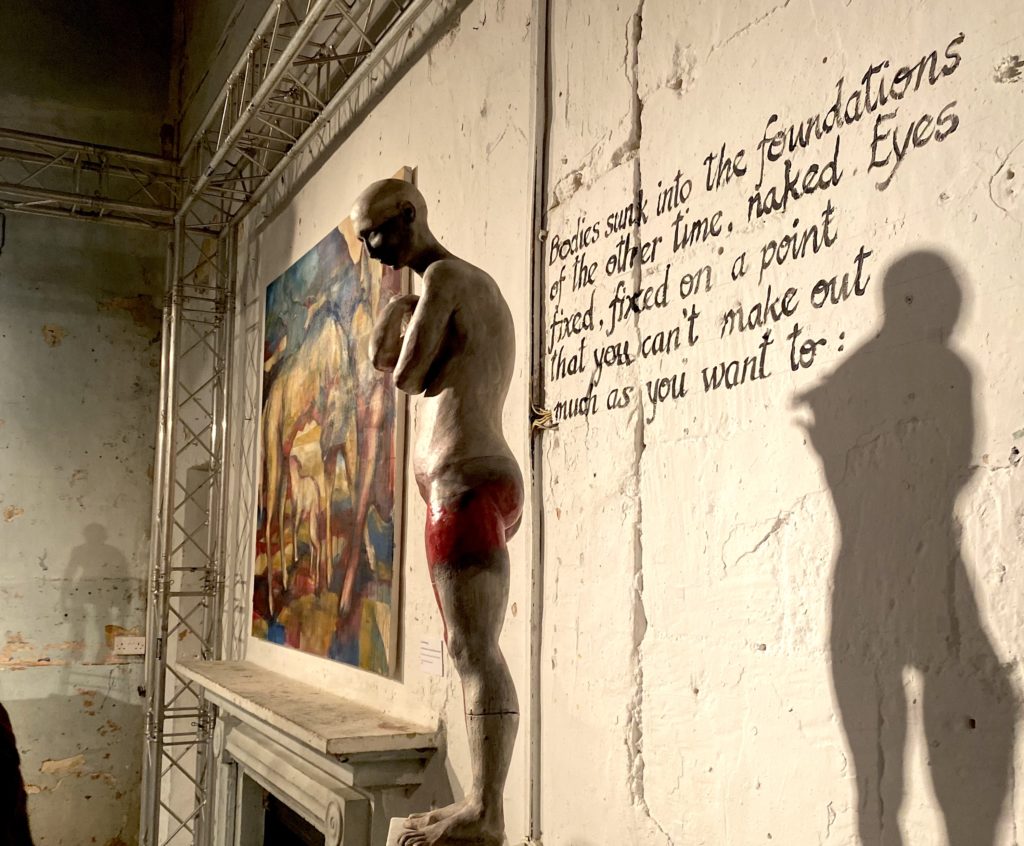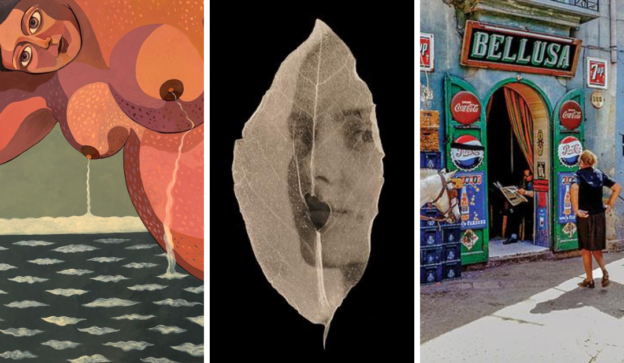Exhibition review: Darkness at Noon

The works of the painter Gabriel Buttigieg, ceramist Paul Scerri and photographer Charles Balzan, exhibited in a collective exhibition at The Splendid in Valletta, are by no means straightforward to comprehend, or particularly beautiful in a conventional or traditional manner. The style of each artist is noticeably different from the other, and yet the artworks exhibited in ‘Darkness at Noon’ have one thing in common: the uncanny sensation that they elicit in the viewer.
The concept of the uncanny is itself quite difficult to define; the word is a rough translation of the German word ‘unheimlich’ which is generally considered to be untranslatable. It is derived from Freud’s essay, Das Unheimliche [‘The Uncanny’], in which he examines the psychological fear associated with the overwhelming sense of unease one feels when confronted with something that is simultaneously both familiar and unfamiliar. The rather indescribable quality that hangs heavily around this word is precisely what makes it so haunting; that which cannot be satisfactorily explained is also what makes the uncanny experience so terrifying, and it is precisely this inadequate explanation that ultimately becomes a haunting presence in its own right.

The title of this exhibition, established by the curators Gabriel Zammit and Joe-Philippe Abela, is itself a metaphor for the uncanny: a moment where that which is assumed to be familiar suddenly becomes strange. The artworks of this exhibition seek to unveil the precise moments when the world that encompasses us acquires this uncanny dimension. These are instances when the world seems to waver and its seams are left bare for all to see, thus exposing the most primal instincts of its inhabitants. An inherent contradiction lies here where, despite being a part of nature, our civilised selves supersede our more primal tendencies, culminating in the formation of a sense of disconnection between the two.
Darkness at Noon seeks to uncover this disconnection, plumbing the experience of one’s inner reality and peeling back the layers that mask the forces lurking beneath. The increasingly deteriorating building of The Splendid acts as the location where the artworks of these three artists are showcased, themselves an invitation for the viewer to question his thoughts and the source of the unease that they elicit.
Gabriel Buttigieg tackles the concept of the uncanny from a psychological perspective. The painter bases his take on the uncanny on man’s primal nature and on his relationship with the animal. When gazing at Buttigieg’s work, the viewer cannot help but be given the impression that the shape of the figures in his paintings seem to melt into one another, emerging from the darkness that envelops the human form and adding to the uncanny sensation that permeates the spaces in between his canvases. The image of a goat is found in all his paintings, acting as a symbol of one’s instinct. Here, a juxtaposition between the human and the animal is created. Simultaneously, however, the human gradually takes on the semblances of the animal in his work, ultimately becoming an animal himself.

Despite the common take on the uncanny, the ceramic sculptures created by Paul Scerri instigate a different response in the viewer than the one elicited by Buttigieg’s works. The ceramist centres his work on questions pertaining to more contemporary human failings, chief of which is hubris and the presumption of those who will inevitably fall from the great height they had been previously elevated to. The human form and its deformation is common to all artworks exhibited in Darkness at Noon, and Scerri’s sculptures stand in contrast to the work of the other two artists in light of the way in which, as opposed to the darkness that shrouds the others, they stand in full view for the viewer to see.

“Paul Scerri’s sculptures stand in contrast to the work of the other two artists in light of the way in which, as opposed to the darkness that shrouds the others, they stand in full view for the viewer to see.”
A state that can be described as primordial is achieved in the work of Charles Balzan, whose artwork succeeds in stripping the many layers concealing the everyday self down to its very bones. The photographs and video installation exhibited in Darkness at Noon are linked together in such a manner as to depict his subjects as emerging out of darkness. Words alone are sometimes incapable of expressing the inner reality that works of art invite the viewer to delve into. Balzan’s work, with its depiction of the human body and its many distortions, scrapes away that uppermost veneer that contemporary individuals have built around themselves and carry with them on a daily basis. In this way, Balzan succeeds in uncovering the ribcage that lies beneath.

“Charles Balzan’s work, with its depiction of the human body and its many distortions, scrapes away that uppermost veneer that contemporary individuals have built around themselves and carry with them on a daily basis.”
The convulsions of the body that are showcased in his work depict the way in which, despite our efforts to conceal our primordial instincts, they nonetheless have a tendency of resurfacing during traumatic experiences. In this way, the distorted bodies of his work are seen to be in a process of attempting to achieve this primordial state. The unease that the viewer feels when witnessing the element of the uncanny that accompanies the work of these three artists is precisely the reaction that they seek to elicit, enabling one to turn inward and to rethink his previous and rather unwavering perception of his own internal reality. Here, the artists of Darkness at Noon allow the viewer to come to conclusions that are entirely subject to his own perception, ones that are arrived at without the intrusion of the artists’ explanation of what they were originally attempting to convey.





Responses